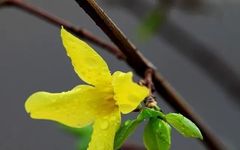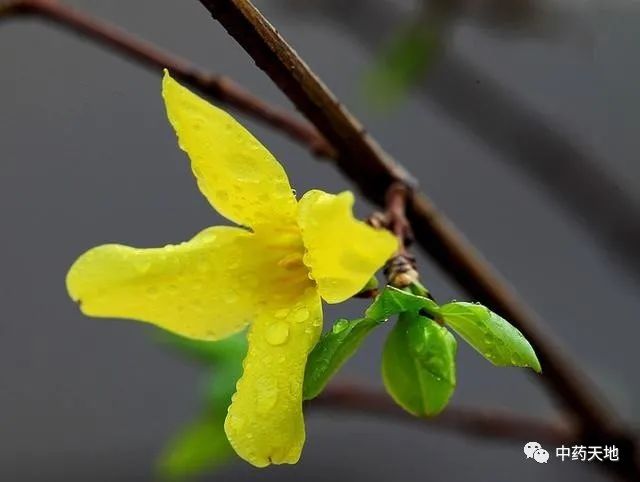
Properties and Channels Bitter, slightly cold. Enters the Lung, Heart, and Small Intestine meridians.Functions and Indications Clears heat and detoxifies, reduces swelling and disperses nodules. Used for abscesses, scrofula, mastitis, erysipelas, wind-heat colds, initial stages of warm diseases, heat entering the nutritive level, high fever with thirst, delirium with rashes, and heat stranguria with urinary retention.(1) Lian Qiao (Forsythia fruit) is cool in nature and bitter in taste, lightly dispersing upwards, effective for clearing heat in the upper jiao, especially for detoxifying and dispersing abscesses, making it a key herb for sores.(2) This herb can be combined with Jin Hua (Honeysuckle), Bo He (Mint), Jing Jie (Schizonepeta), and Gan Cao (Licorice) to disperse wind and clear heat; with Xuan Shen (Scrophularia), Mai Dong (Ophiopogon), Qing Lian Xin (Lotus Plumule), and Zhu Ye (Bamboo Leaf) to clear the heart and drain heat; with Jin Hua, Pu Gong Ying (Dandelion), Zi Hua Di Ding (Viola), and Chi Shao (Red Peony) to detoxify and disperse abscesses; and with Xuan Shen, Xia Ku Cao (Selfheal), and Bei Mu (Fritillaria) to disperse nodules and treat scrofula.
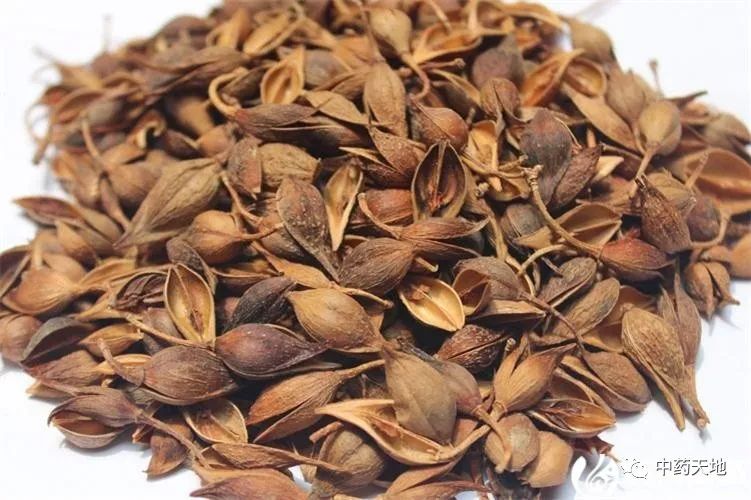
(3) Jin Hua and Lian Qiao both have excellent heat-clearing and detoxifying properties, capable of venting heat to the surface and clearing internal heat, thus they are often used together in clinical practice. However, Jin Hua can also cool the blood and stop dysentery; Lian Qiao can clear heart heat and disperse nodules.(4) Traditionally, this herb was divided into Lian Qiao Ke (fruit) and Lian Qiao Xin (seed), with the latter considered to have better heart-clearing properties. Currently, in the Shanghai area, it has been simplified to one type of Lian Qiao, no longer differentiated into two herbs.
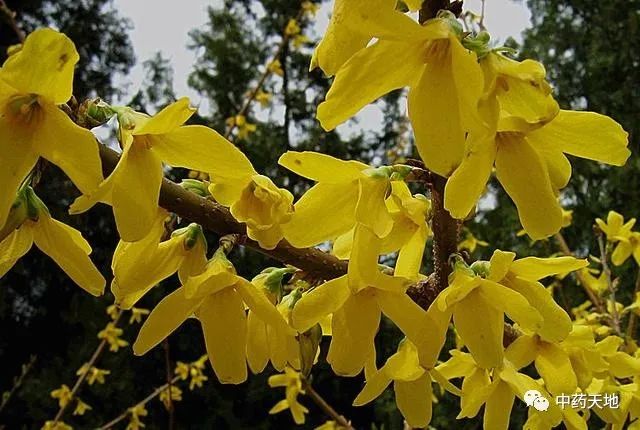
Source This herb is the dried fruit of the plant Forsythia suspensa (Thunb.) Vahl, belonging to the Oleaceae family. It is harvested in autumn when the fruit is initially ripe and still green, impurities are removed, steamed, and dried, commonly referred to as “Qing Qiao”; when the fruit is fully ripe, it is harvested, dried, and impurities removed, commonly referred to as “Lao Qiao”.Habitat and Distribution It grows abundantly in mountainous and wild areas and is cultivated in various regions. It is distributed in Liaoning, Hebei, Henan, Shandong, Jiangsu, Hubei, Jiangxi, Yunnan, Shanxi, Shaanxi, and Gansu provinces, with major production in Shanxi, Henan, Shaanxi, and Shandong. Additionally, it is also produced in Hubei, Hebei, Sichuan, and Gansu.
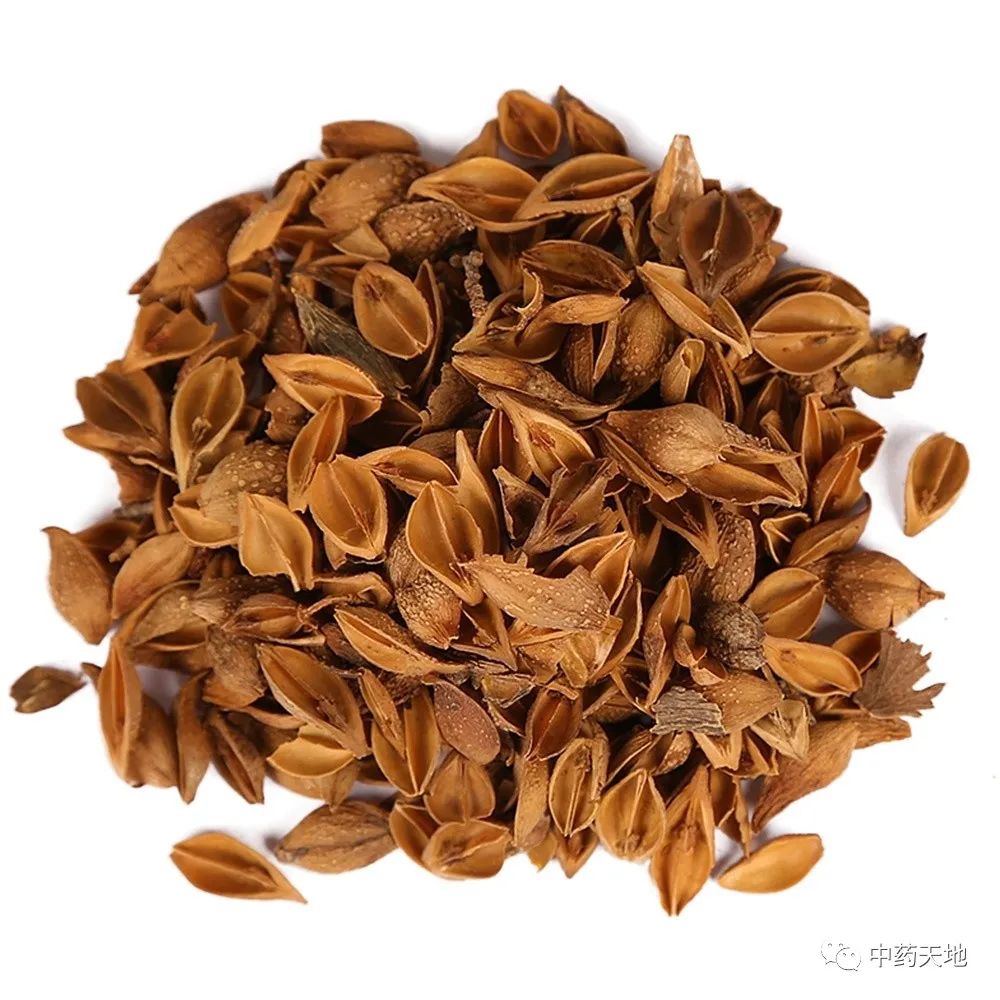
Characteristics The herb is elongated oval to oval in shape, slightly flattened, measuring 1.5 to 2.5 cm in length and 0.5 to 1.3 cm in diameter. The surface has irregular longitudinal wrinkles and numerous small raised spots, with a distinct longitudinal groove on each side. The apex is sharply pointed, and the base has a small fruit stem or has fallen off. Qing Qiao is mostly uncracked, with a green-brown surface and fewer raised grayish-white spots, and is hard in texture; the seeds are numerous, yellow-green, slender, with a wing on one side. Lao Qiao cracks from the apex or splits into two lobes, with a yellow-brown or red-brown surface, and the inner surface is mostly light yellow-brown, smooth, with a longitudinal partition; it is brittle; the seeds are brown and mostly fallen off. The aroma is faintly fragrant, and the taste is bitter.
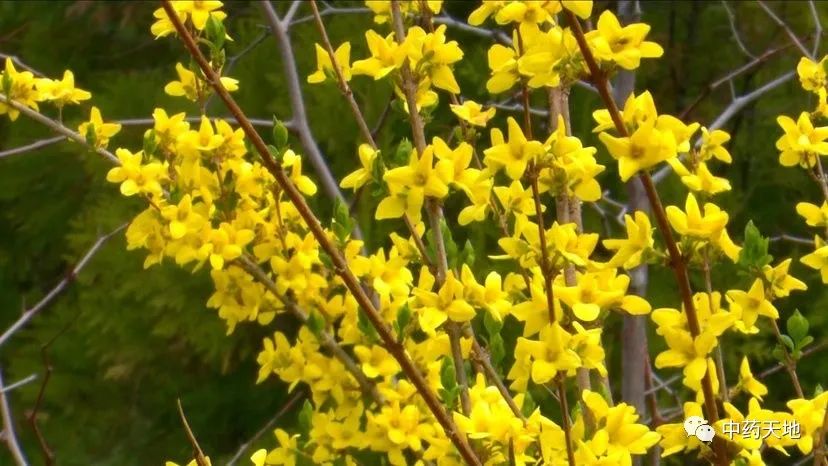
Formulas ① For Taiyin wind-heat, warm heat, and warm epidemic diseases, at the initial stage with heat but not aversion to cold and thirst: Lian Qiao 1 liang, Jin Hua 1 liang, Ku Jie Geng 6 qian, Bo He 6 qian, Zhu Ye 4 qian, Sheng Gan Cao 5 qian, Jie Sui 4 qian, Dan Dou Chi 5 qian, Niu Bang Zi 6 qian. Grind into a powder, take 6 qian each time, decoct with fresh reed root soup, and take when the aroma is strong, do not overboil. For severe cases, take every two hours, three times a day, and once at night; for mild cases, take every three hours, three times a day, and once at night; if the illness does not resolve, take again. (From “Wen Bing Tiao Bian” – Yin Qiao San) ② For all types of heat in children: Lian Qiao, Fang Feng, Gan Cao (roasted), and Shan Zhi Zi in equal parts. Grind into a powder, take 2 qian each time, decoct with one medium cup of water to 7 parts, remove the dregs, and take warm. (From “Liu Zheng Huo Ren Shu” – Lian Qiao Drink)
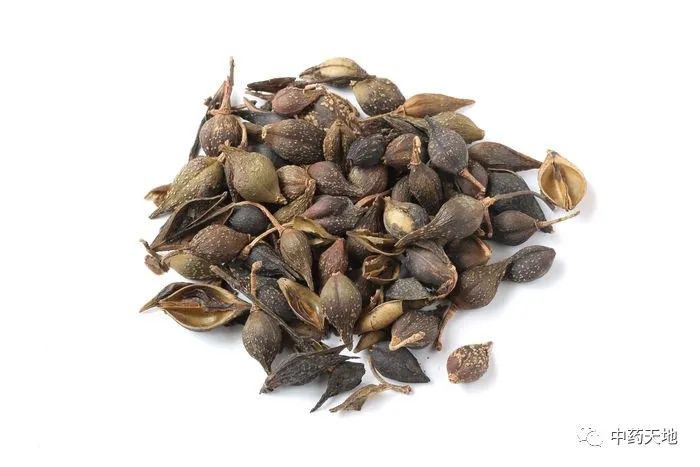
③ For red rashes and toxins: Lian Qiao alone, decoct and drink. (From “Yu Qiao Yi Ling”) ④ For mastitis and breast lumps: Lian Qiao, Xiong Shu Shi, Pu Gong Ying, and Chuan Bei Mu each 2 qian. Decoction for oral administration. (From “Yu Qiao Yi Ling”) ⑤ For scrofula and tuberculosis that do not resolve: Lian Qiao, Gui Jian Yu, Qu Mai, and Gan Cao (roasted) in equal parts. Grind into a fine powder, take 2 qian each time, mix with rice wash water before bed. (From “Yang Shi Jia Cang Fang” – Lian Qiao San) ⑥ For tongue ulcers: Lian Qiao 5 qian, Huang Bai 3 qian, Gan Cao 2 qian. Decoction for gargling. (From “Yu Qiao Yi Ling”)
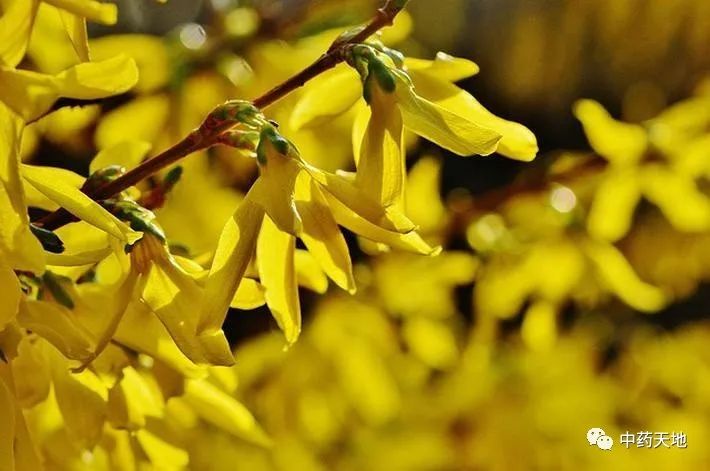
Literature Excerpts 1. “Chinese Herbal Medicine” 【Clinical Applications】 ① Used for external wind-heat or initial stages of warm diseases. The effects of this herb are similar to Jin Hua, thus it is used for external wind-heat or initial stages of warm diseases, and the two herbs are often used together. ② Used for heat diseases with high fever, irritability, thirst, or rashes. Lian Qiao can clear heat and detoxify, applicable for both qi-level heat and blood-level heat. The above symptoms are caused by excessive heat evil entering the nutritive blood, and Lian Qiao can be combined with Huang Lian, Chi Shao, and Dan Pi for treatment. ③ Used for sores, swelling, and toxins, scrofula, erysipelas, mastitis, etc. Lian Qiao functions to clear heat and detoxify, reduce swelling and disperse nodules, thus it can treat sores and swelling, often combined with Jin Hua, Xiang Bei Mu, Xia Ku Cao, etc.
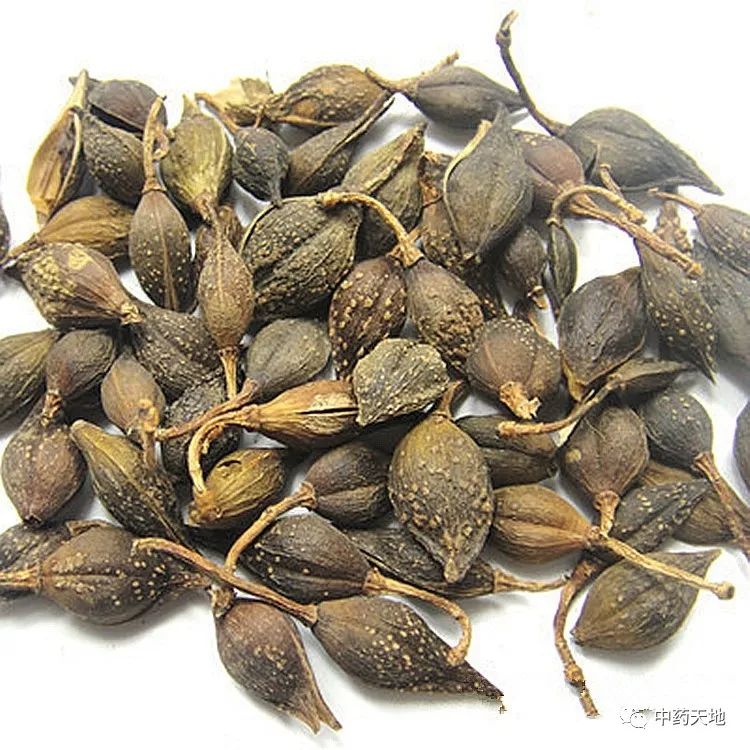
2. “Pearl Bag Supplement” Lian Qiao, bitter and neutral, slightly cold, non-toxic. It ascends and is yin. Its uses are twofold: to drain guest heat from the meridians; to disperse swelling and sores. 3. “Zheng Lei Ben Cao” Bitter, neutral, non-toxic. It treats cold and heat, scrofula, abscesses, malignant sores, goiter, and heat toxins, expelling white worms. Also known as Yi Qiao, Lan Hua, Zhe Gen, Zhi, and San Lian. Grows in the valleys of Mount Tai. Harvested in August, dried in the shade. 4. “Expanded Summary of Medicinal Properties” Bitter, neutral, non-toxic. It treats cold and heat, scrofula, abscesses, malignant sores, goiter, heat toxins, and expels white worms.
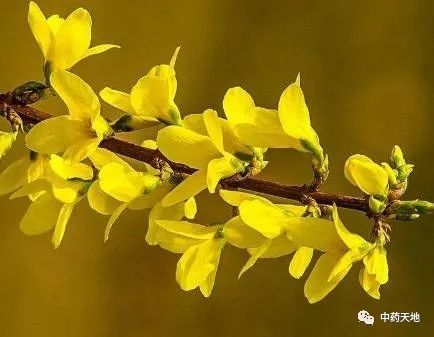
5. “Medicinal Appraisal” Cold in nature, bitter and pungent, non-toxic, both aroma and taste are light, it ascends, and is the yang of yang. It treats heart heat and breaks goiters. The classics state that all swellings and sores belong to heart fire. Only Lian Qiao, being cool and lightly pungent, can disperse guest heat from the meridians and eliminate swellings and abscesses. Jun Jie Cao, Tong Ma You, and Chen Feng Mi can treat toxic furuncles. It pairs with Ma Huang, Tong Shan Jia, and Niu Zi to effectively treat unmanifested smallpox. Combined with Huang Lian, it enters the heart to clear heat. Combined with Ban Xia, it enters the lung to drain fire. Combined with Zhi Zi, it guides heat downwards. Combined with Ma Huang, it disperses heat outwards. It is also said to be a sacred medicine for surgery, as it clears heat with bitterness and disperses fire with pungency.
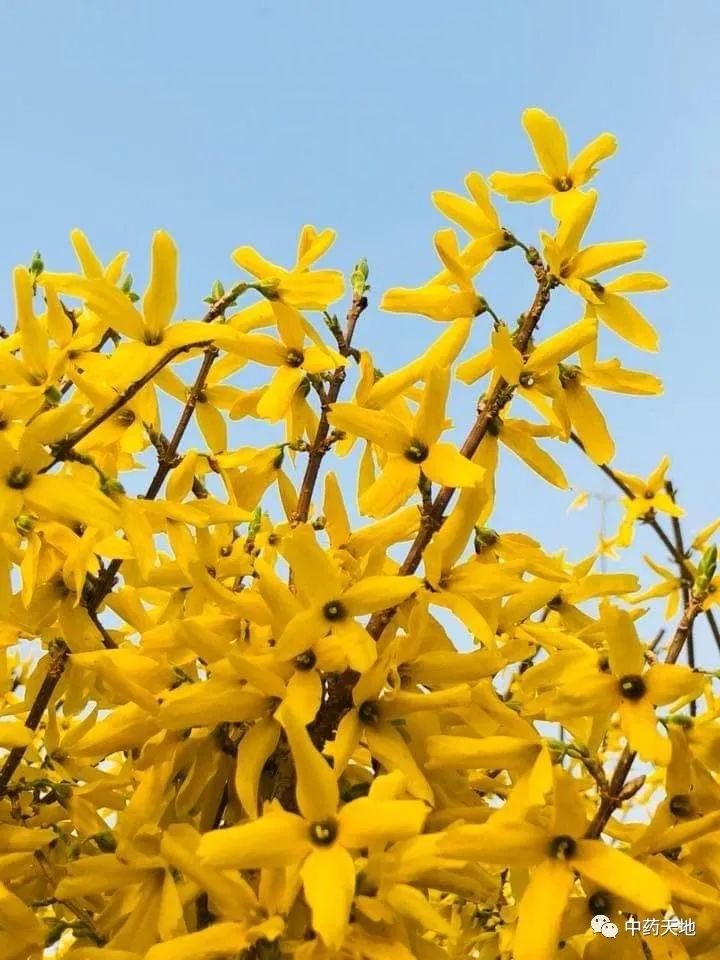
6. “Newly Revised Materia Medica” Bitter, neutral, non-toxic. It treats cold and heat, scrofula, abscesses, malignant sores, goiter, heat toxins, and expels white worms. Also known as Yi Qiao, Lan Hua, Zhe Gen, Zhi, and San Lian. Grows in the valleys of Mount Tai. Harvested in August, dried in the shade. It is found everywhere, now used for its fruit. [Note] There are two types: Da Qiao and Xiao Qiao. Da Qiao has narrow long leaves like water mint, with lovely yellow flowers, growing in wet areas, resembling unripe fruits of the chuan tree, while Xiao Qiao grows on high ground, with leaves, flowers, and fruits similar to Da Qiao but smaller and finer. People in the southern mountains use both. Currently, only Da Qiao seeds are used in Beijing, not the stem flowers.
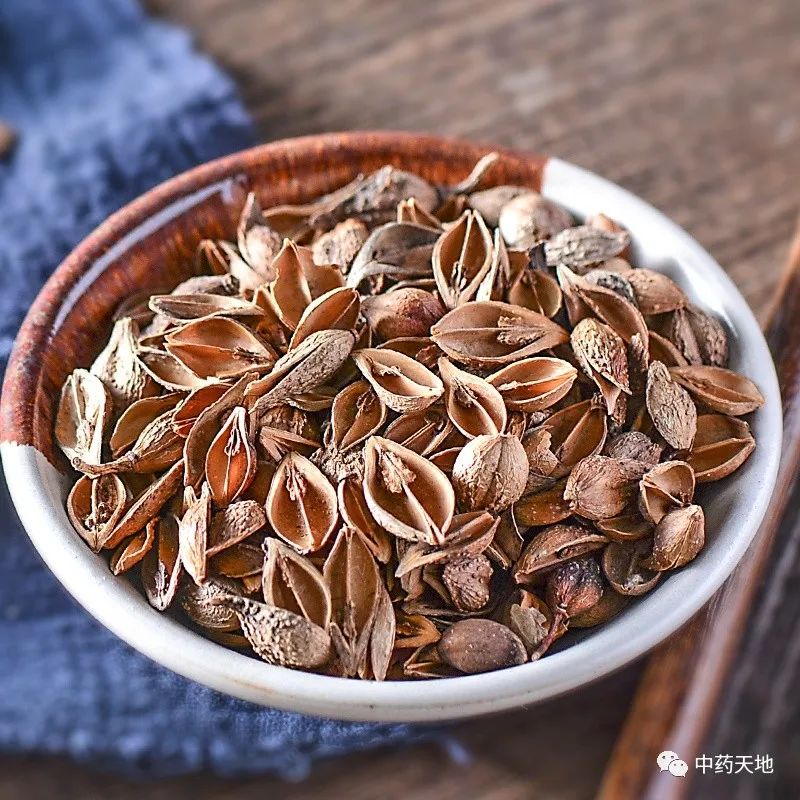
7. “Tang Ye Ben Cao” Neutral in nature, bitter in taste. Bitter, slightly cold, both aroma and taste are light, yin in nature, non-toxic. It is a medicine for the hand and foot Shaoyang and Yangming meridians. 8. “Shen Nong’s Classic of Materia Medica” Bitter and neutral. It treats cold and heat, scrofula, abscesses, malignant sores, goiter, heat toxins, and expels white worms. Also known as Yi Qiao, Lan Hua, Zhi, and San Lian. Grows in the valleys. 9. “De Pei Ben Cao” Bitter, cool. Enters the foot Shaoyin, hand Yangming, Shaoyin, and Jueyin meridians. It drains blood heat from the six meridians, disperses swelling and toxins from sores, promotes urination, and expels pus. It pairs with Mu Tong to drain heart fire. Combined with sesame powder, it treats scrofula. Together with Niu Bang, it treats smallpox toxins. Combined with Da Huang, it treats horse knife. After abscesses rupture, if the pus is clear and pale, and the stomach is weak with little appetite, both are contraindicated.
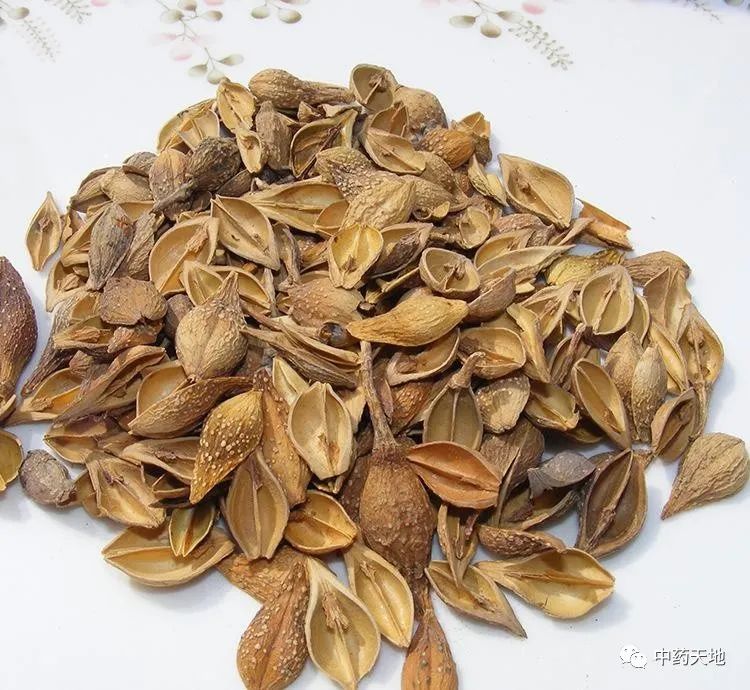
10. “Ben Jing Feng Yuan” Lian Qiao is light and clear, entering the hand Shaoyin and Jueyin qi meridians. It drains guest heat from the heart meridian, breaks blood clots, disperses qi stagnation, reduces swelling and toxins, and promotes urination. All painful and itchy sores belong to heart fire. Lian Qiao drains heart heat, making it a sacred herb for sores; among the twelve meridian herbs for sores, this must be included, as it is the meaning of dispersing what is bound. The “Ben Jing” specifically addresses cold and heat, scrofula, goiter, and heat conditions, all caused by qi stagnation in the foot Shaoyang gallbladder meridian, and this herb clears the gallbladder’s stagnant heat. Abscesses and malignant sores are all due to obstruction of the nutritive and defensive qi, which can be dispersed by cooling. Toxins that bind can be resolved by pungent and aromatic herbs. However, the bitter and cold nature can only treat heat swelling, thus after abscesses rupture, if the pus is clear and pale, and the stomach is weak with little appetite, it is contraindicated. The root cools and descends heat qi, treating damp-heat jaundice, and when damp-heat is eliminated, the complexion improves and the eyes become clear. Zhong Jing treats stagnant heat in the interior causing jaundice, and Ma Huang Lian Qiao Chi Xiao Dou Decoction addresses this. Few people know this, as if there is no root, it is replaced with solid substances.
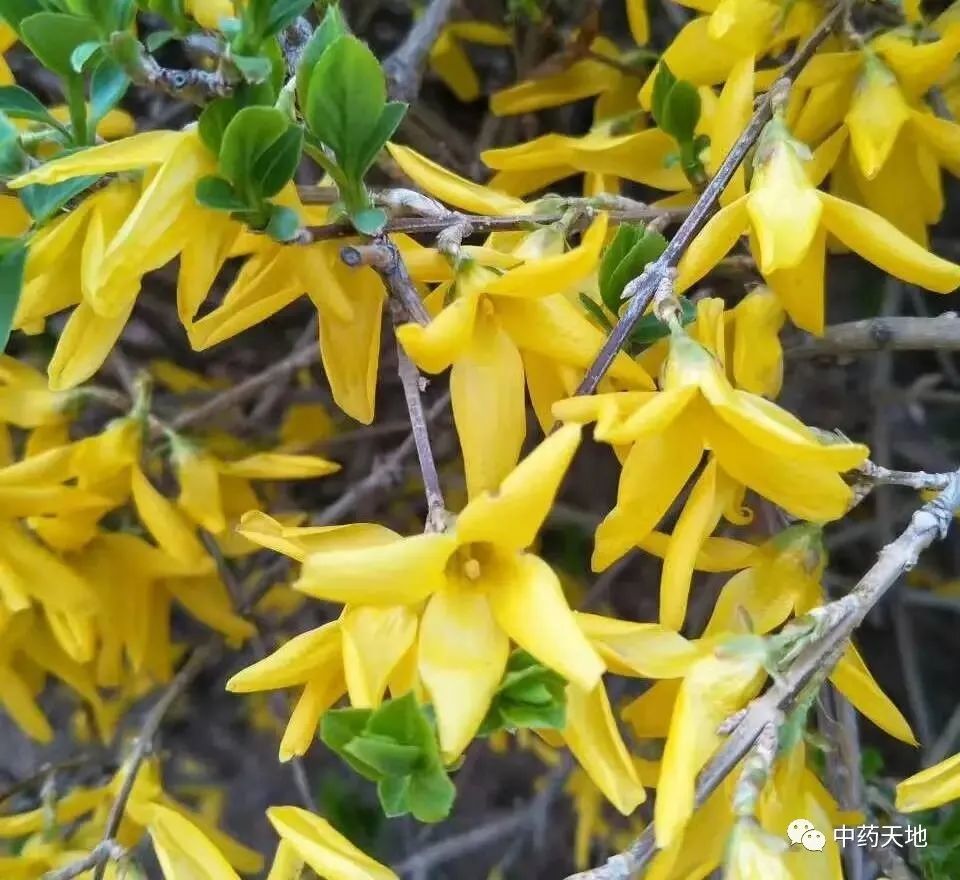
11. “Ben Cao Yan Yi” Lian Qiao is not to be confused with other herbs, and it does not grow in wet areas, but is abundant in the valleys of Mount Tai. Now only its seeds are used. When broken, its pieces resemble Qiao, hence the name. It is most effective for draining guest heat from the heart meridian, especially suitable for children.
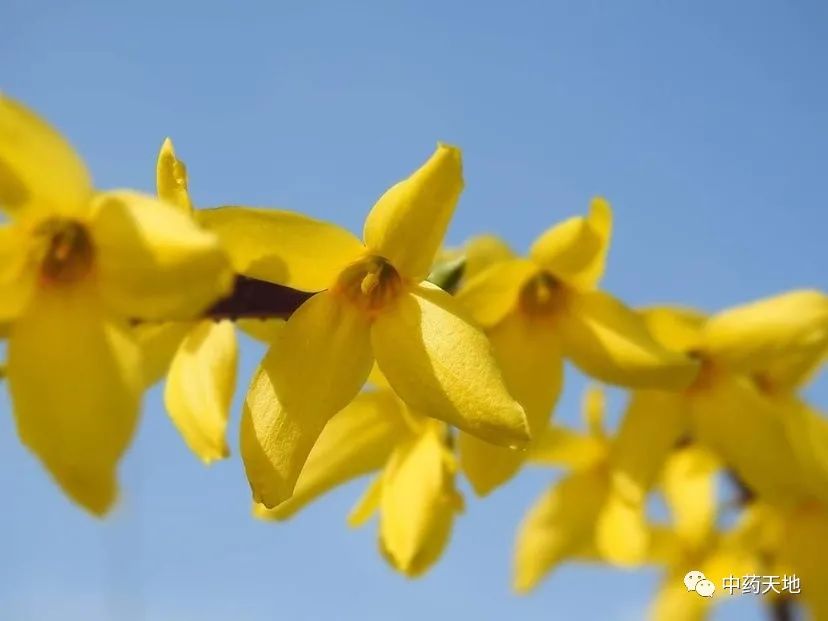
12. “Ben Cao Qiu Zhen” Lian Qiao resolves heart heat evils (specifically entering the heart). Bitter and slightly cold. Light and floating in quality. Although it is recorded to drain the six meridians’ stagnant fire, its light and clear nature is indeed a key agent for draining heart heat. (Lian Qiao resembles the heart but has petals.) The heart is the master of fire. When the heart is clear, all organs are also clear. However, if damp-heat is not eliminated, numerous symptoms will arise. Thus, it can treat abscesses, five types of dysuria, cold and heat scrofula, and heat toxins. The classics state it can treat all these conditions. (Wang Ang states that all painful abscesses are due to solid evils, while swellings that are not painful are due to vacuity evils. Red swellings are heat-bound, while non-bound swellings are due to retained qi, phlegm, or fluid.) The classics also state that all painful sores belong to heart fire. Lian Qiao is indeed a sacred herb for sores. However, it is often used in cases of stomach vacuity and little appetite. Caution is advised for those with weak spleen and stomach, especially since it clears without tonifying. After abscesses rupture, it should not be taken. Heat due to vacuity is also contraindicated.
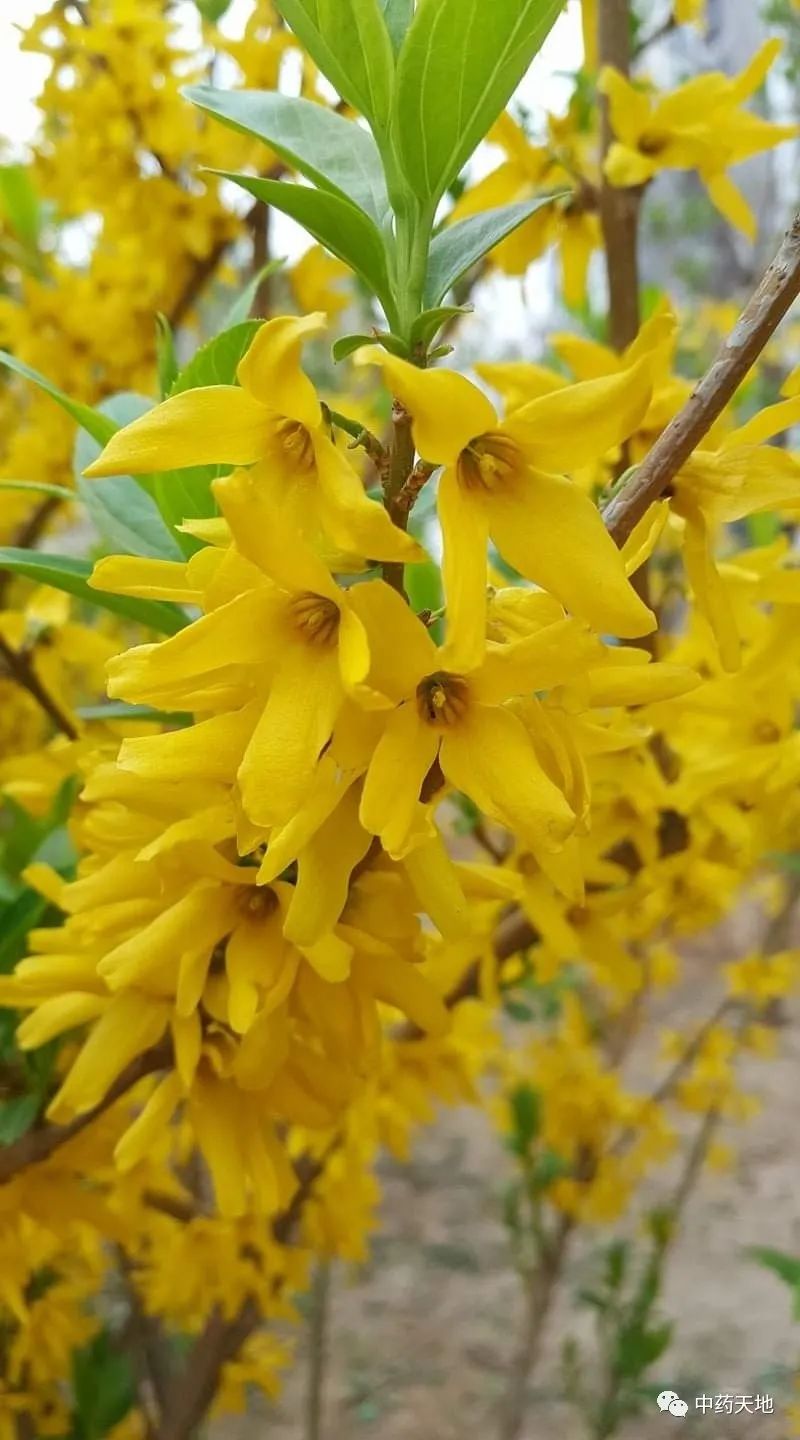
13. “Ben Cao Jing Jie” Neutral in nature, bitter in taste, non-toxic. It treats cold and heat, scrofula, abscesses, malignant sores, goiter, heat toxins, and expels white worms. (Remove the heart for use.) Lian Qiao is neutral in nature, embodying the autumn metal qi. It enters the hand Taiyin Lung meridian. Bitter and non-toxic, it embodies the southern fire flavor, entering the hand Shaoyin Heart and hand Jueyin Pericardium meridians. Both aroma and taste descend, being yin in nature. The pericardium is the ministerial official. It delights in joy. Its meridian is separate from the three jiaos, emerging through the throat and behind the ears, combining with Shaoyang. When stagnant, it causes the pericardial fire to rise and inflame the meridians, resulting in cold and heat scrofula. Lian Qiao is light, clear, and bitter, thus it can disperse and heal cold and heat. Abscesses and malignant sores arise from heart fire. Lian Qiao’s bitter taste clears the heart, thus it governs these conditions. Goiter and heat-bound swellings are also due to the pericardium’s stagnant fire. Its governing properties are light and dispersing. Toxins that bind arise from pungent heat. Pungent heat generates worms. Lian Qiao is neutral and can clear, while its bitterness can drain, resolving heat and transforming toxins.
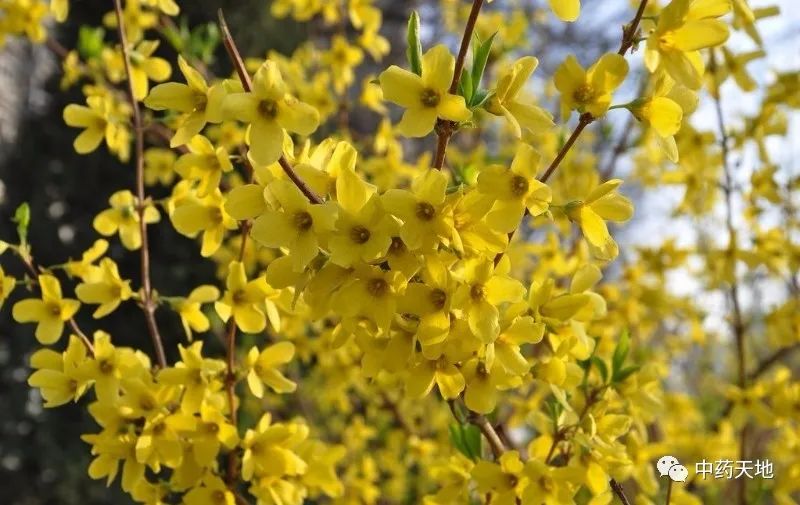
14. “Ben Cao Hai Li” [Harm] Clearing and non-tonifying herbs should not be taken after abscesses rupture, nor should they be taken when heat is due to vacuity. Bitter and cold can hinder the stomach; excessive consumption can reduce appetite, and those with weak spleen and stomach, prone to diarrhea, should avoid it. [Benefit] Bitter and cold, entering the heart, pericardium, gallbladder, and large intestine, it is the main medicine for hand Shaoyin. It eliminates guest heat from the heart, Yangming damp-heat, disperses blood clots and qi stagnation, promotes urination, and opens the meridians. All painful sores belong to heart fire, thus it is a sacred herb for sores. The heart’s core is even more bitter and cold, draining heart fire more effectively. Warm heat entering the heart and nutritive level cannot be treated without this herb.

15. “Ben Cao Bian Du” Bitter first enters the heart, cold can reach the lungs. All sores and toxins arise from the wandering of evil fire, causing qi stagnation and blood coagulation. This herb is used to vent and circulate both exterior and interior. (Lian Qiao’s kernel initially resembles the heart, like an unopened lotus flower; when ripe, it resembles the lung. Remove the heart for use, and the shell is a light and floating dispersing herb. Its taste is bitter and cold, entering the heart and lung divisions, as the lung governs the qi of the body, and the heart governs the blood of the body. Thus, it can disperse the coagulation of qi and blood in the twelve meridians, making it a sacred herb for abscesses and sores. However, it is contraindicated for exterior symptoms belonging to cold.) Excerpts from “Chinese Pharmacopoeia” and “Chinese Herbal Encyclopedia”

